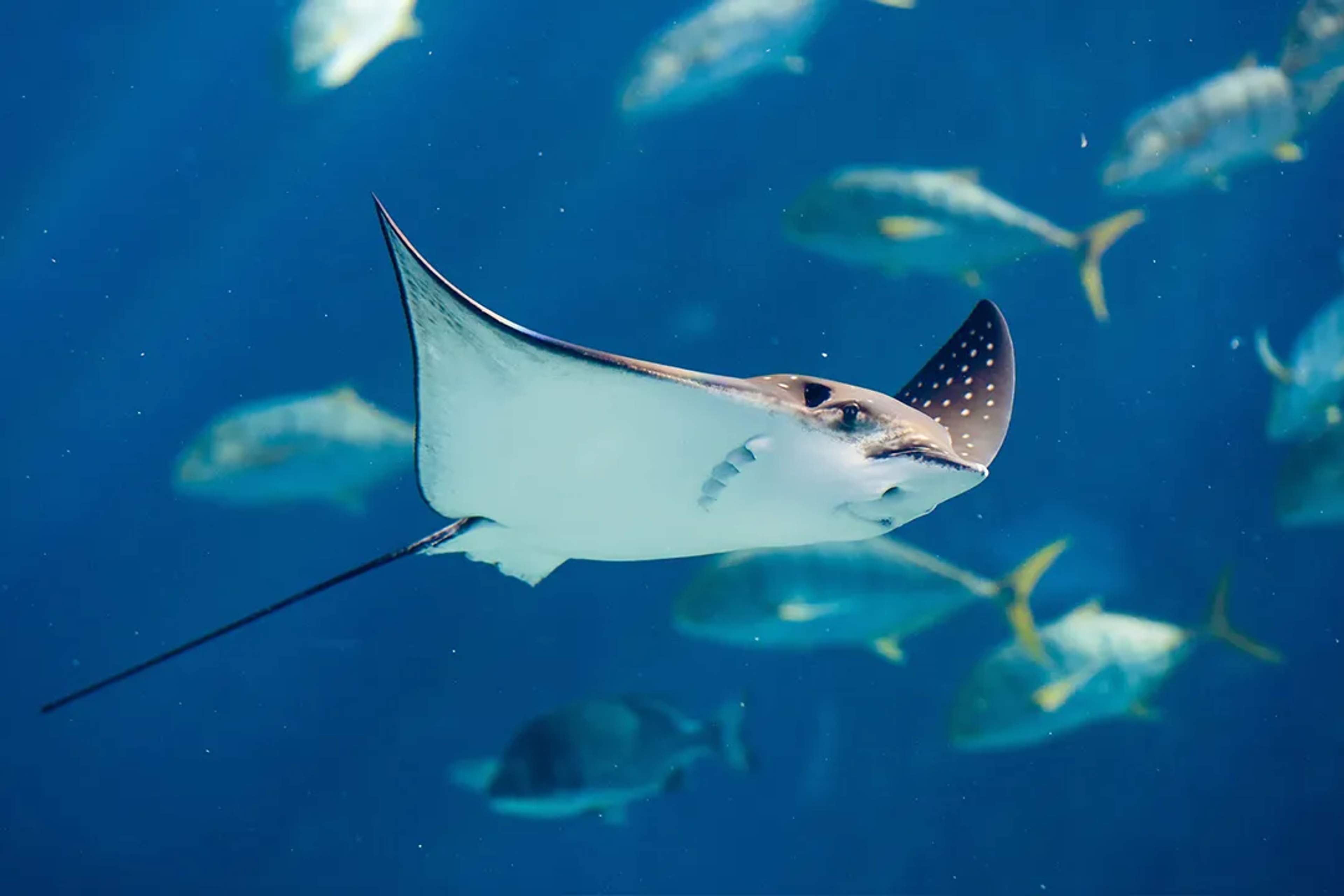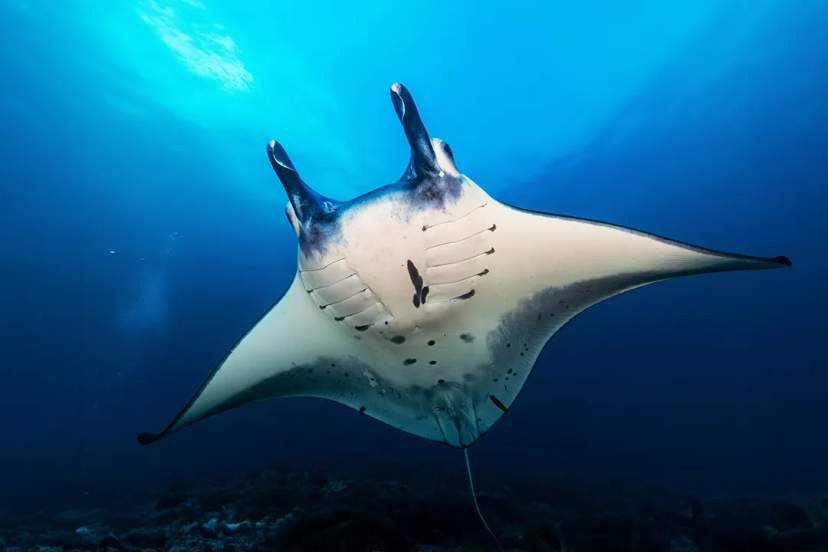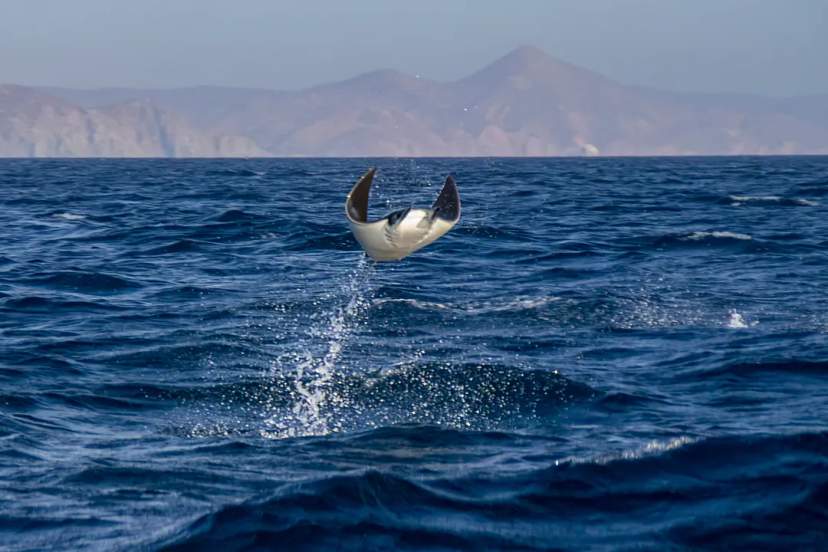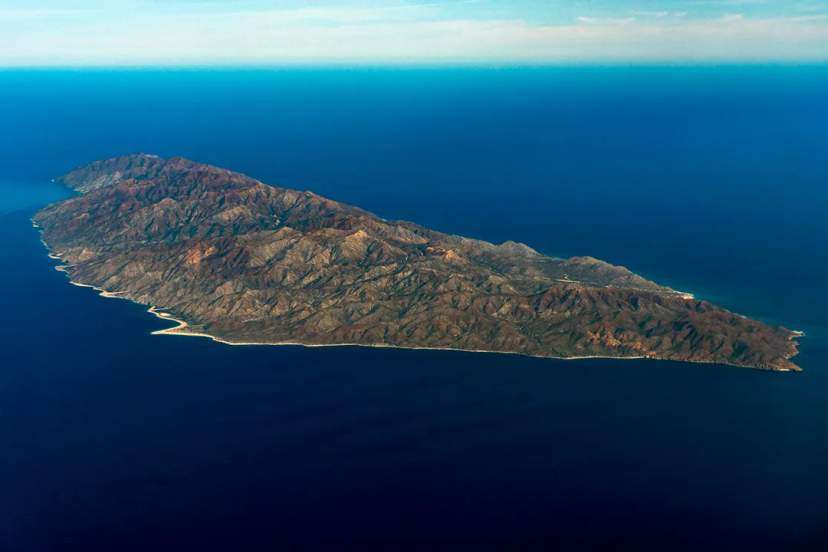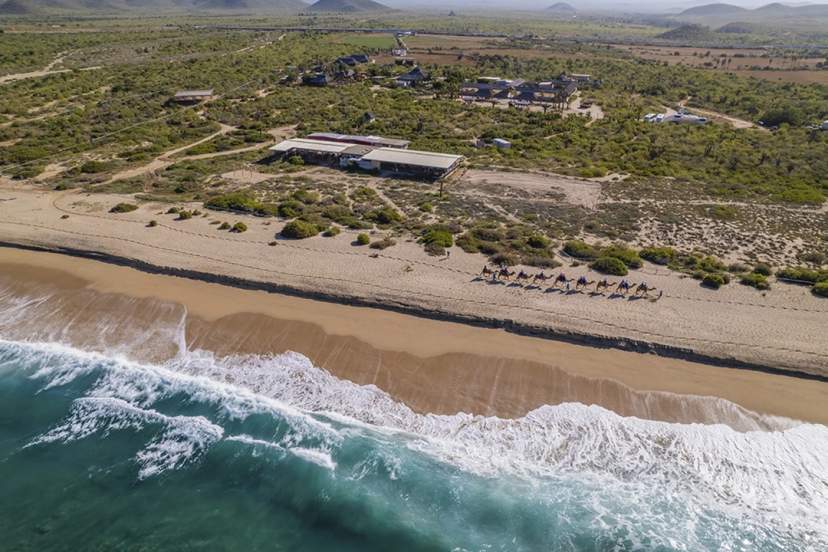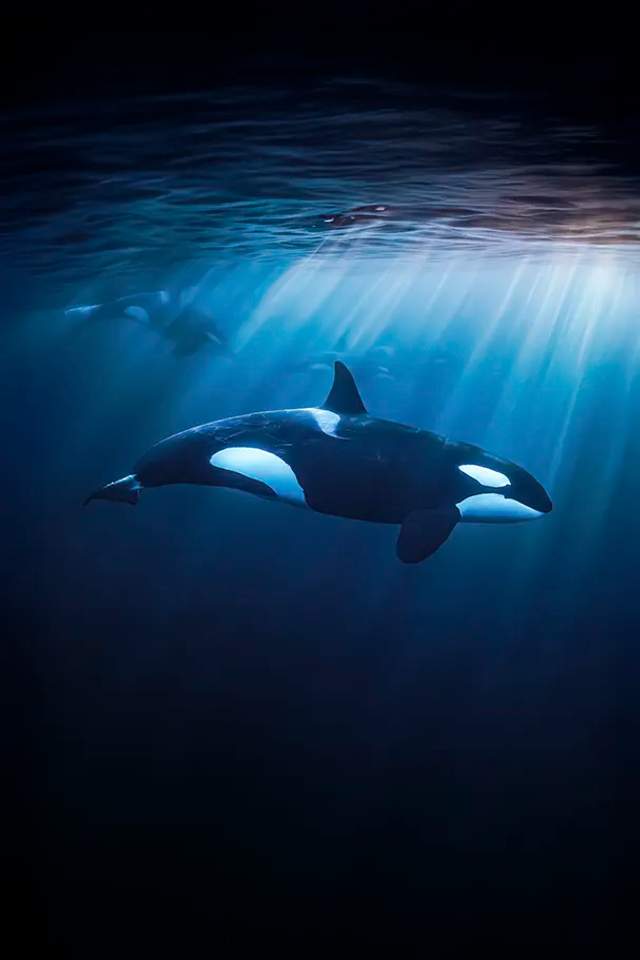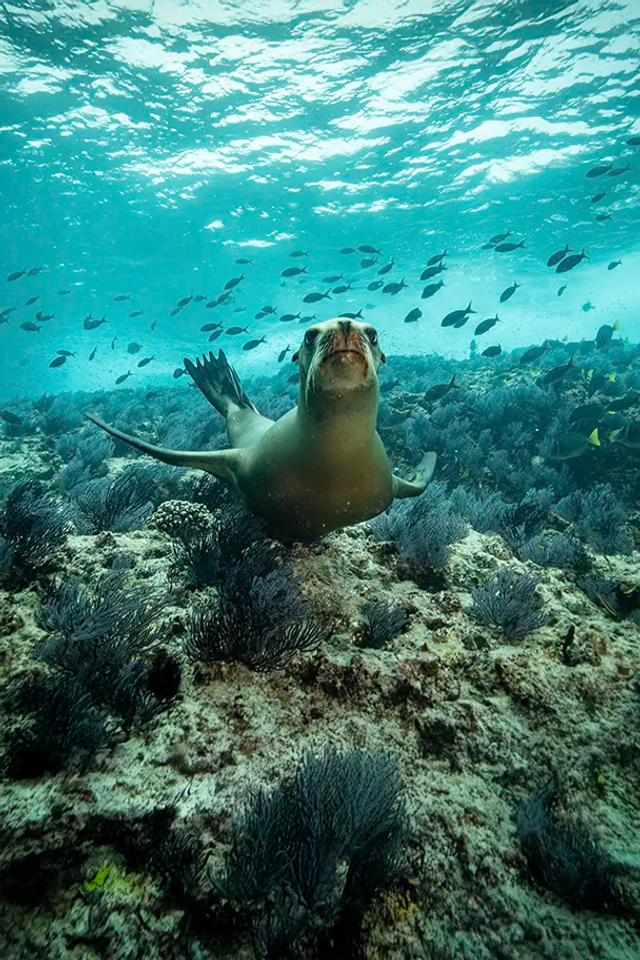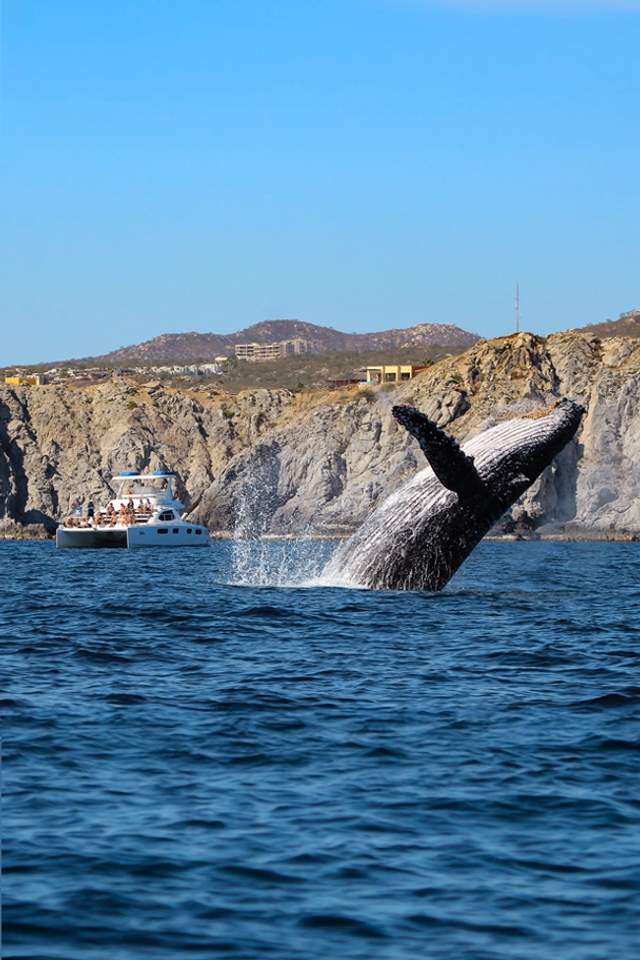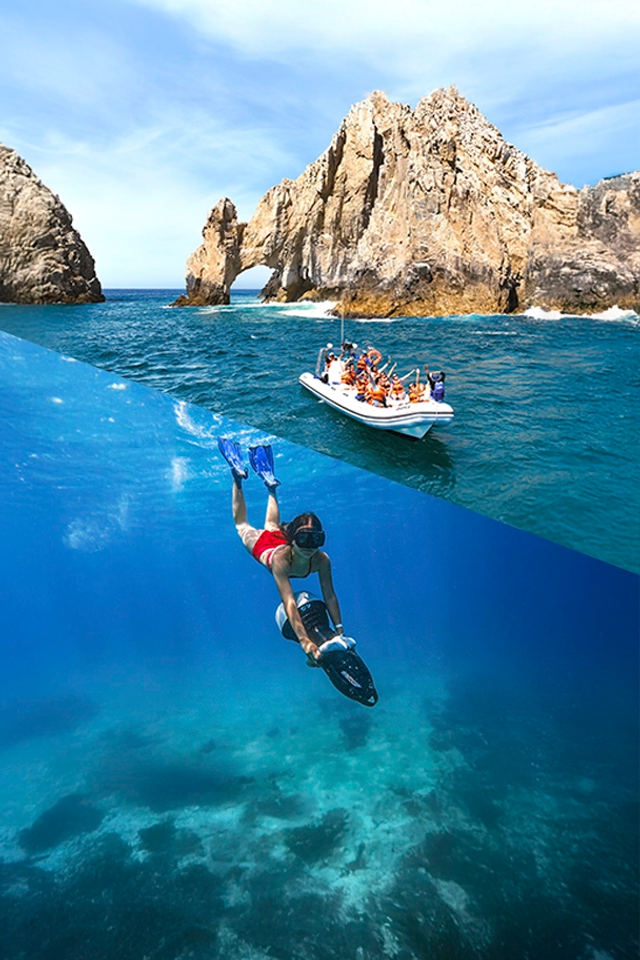Imagine the sea erupting as more than 10,000 mobulas launch skyward inside Baja's Cerralvo Channel. This pulse of silver wings ranks among the planet's greatest wildlife spectacles—and it unfolds within a day's reach of Cabo San Lucas.
Mobulas are manta cousins, but half the size and twice as acrobatic, often flipping two meters high before melting back into turquoise water. They cruise in tight formations called fevers, filter-feeding on plankton and posing no threat to swimmers.
This guide covers the best season, essential gear, and simple etiquette for sharing the water responsibly with these magnificent creatures. Discover the best launch bays, the science behind the migration, and a few other ocean locals you might encounter along the way.
Can you really see mobula rays in Cabo?
Each late spring, the Sea of Cortez erupts with life as massive schools of rays ripple across the surface in the Cerralvo Channel, about 90 minutes north of Cabo San Lucas. Locals call these shimmering carpets "fevers," and when the sun hits their wingtips, the ocean looks like it's boiling.
The most reliable launch points are within easy reach: Los Barriles halfway up the coast and Isla Cerralvo, both lying inside the nutrient-rich corridor that stretches from La Paz down to Cabo.
This pocket of deep canyons funnels upwelling plankton into calm, clear coves. Everything lines up for the rays here: abundant food, minimal large predators, and sheltered shallows that let you drift beside them instead of chasing fleeting shadows.
When the surface flattens out at dawn, it's not unusual to slip over the gunwale and find thousands gliding silently just a few fin kicks below.
When is the best time to see mobula rays in Cabo?
Mid-April signals the first silver flashes, but the frenzy crests from May into early July. Warming surface currents collide with cold, nutrient-rich upwellings, sparking plankton blooms that lure vast aggregations into the shallows. June and July have produced the densest spectacles, with thousands carpeting the Cerralvo Channel in a living mass.
A quieter second pulse drifts through late November to January. Dawn departures give you glass-flat water and rays still feeding near the surface. Build a flexible itinerary and leave a couple of buffer days so a single gust never steals your encounter.
What should I bring for a mobula ray trip?
The morning air is cool when you board the panga at sunrise, but by noon you'll feel the Baja heat.
- Quick-dry swimsuit and light windbreaker for morning chill
- Long-sleeve UPF rash guard for sun protection on the water
- Polarized sunglasses to spot rays from the boat
- Sun-protective clothing
- Small dry bag for electronics and cameras
- Leave jewelry at your hotel—rays don't return lost valuables
Our team provides all essential gear, including quality masks, fins, snorkels, and wetsuits. We handle the equipment so you can focus on the rays.
Is swimming with mobula rays safe?
Short answer, yes. These gentle, toothless filter-feeders glide through plankton clouds rather than hunt prey. They lack the barbed tail that gives stingrays their sting, and there are no documented attacks on snorkelers anywhere in their range.
Before you enter the water, your guide delivers a safety briefing covering approach etiquette, hand signals, and emergency protocols. Group sizes stay small, with a surface support boat shadowing every swim for quick pick-ups and rest breaks.
Certified bilingual guides enter first, creating a calm environment so the rays can pass naturally around you. The rules are simple: keep your hands to yourself, move slowly, and follow instructions. Touching, chasing, or diving through the school spooks the animals and ends the encounter for everyone.
Licensed operators carry federal permits, radios, GPS, medical kits, and life jackets. Guides maintain first-aid and rescue training, while port authorities enforce equipment checks before each departure. Follow these safeguards and you'll discover that sharing the water with thousands of rays feels surprisingly serene—and completely safe.
Do I need prior experience to swim with mobula rays?
You don't need advanced skills; just the ability to float and breathe through a snorkel. The team provides wetsuits, masks, and fins, and keeps a support panga within arm's reach.
Comfort grows with practice, so spend a few pool laps rehearsing gentle duck-dives. Dipping a few feet lets you photograph the school eye-to-eye. Freediving is optional—stay at the surface whenever you wish.
Before anyone slides in, a snorkeling brief covers passive body language, entry signals, and wildlife etiquette. Your guides enter first and manage small groups. Share any medical limits in advance.
How close can you get to mobula rays while swimming?
Your guide eases the panga 30–50 feet ahead of the school, then signals a quiet slide into the turquoise water. The rays sweep forward in a slow-moving galaxy; in seconds, you'll feel wingtips pass within arm's length, yet they never touch.
Local wildlife protection guidelines recommend staying at least six feet away, keeping hands to yourself, and skipping flash photography. These simple boundaries protect the animals and keep the encounter relaxed, and you'll find this advice echoed in various marine wildlife codes of conduct.
Rushing, kicking hard, or chasing a squadron only drives it deeper and out of sight. Your guide watches for that, offering gentle reminders so every swimmer moves softly. Passive behavior today means future guests—and the rays themselves—can share the Sea of Cortez's fleeting magic tomorrow.
Why do mobula rays leap out of the water?
At dawn, you'll often hear a hollow smack echo across the channel; that's a ray blasting six feet into the air before belly-flopping back down. Guides call it the "Mobula Ballet," and science still debates the choreography. Mating displays, parasite removal, and long-range communication are the three front-running theories, yet none diminish the thrill of watching hundreds vault in sync.
If you want to freeze the action, set your camera to burst with a shutter speed of at least 1/2000 s. Jumping peaks during the April-July migration, especially in the calm early hours when the water turns into glass.
What else might I see on the same trip?
The Sea of Cortez seldom stages a single-species act. As your guide steadies the panga, spinner and common dolphins dart across the bow, their chatter echoing through clear water
From December through April, the horizon can erupt with humpback whales launching forty-ton breaches. During the same season, whale sharks and the occasional orca may glide past, drawn by the plankton blooms that also feed the rays.
Between jumps, snorkel over lava reefs at La Reina or El Bajo, where angelfish flicker around turquoise sponges, moray eels lurk in crevices, and stealthy octopus patrol fan-coral gardens
Snap photos, then log each encounter on citizen science platforms like iNaturalist. You'll help researchers understand why Cousteau crowned this corridor "the aquarium of the world," and turn an unforgettable wildlife outing into real-world conservation.
What is the most hassle-free way to experience mobula rays in Cabo?
Our Ocean Safari Expedition offers the most seamless way to encounter these incredible creatures. This comprehensive journey includes round-trip transportation, six hours on the water, expert guidance from bilingual marine experts, a delightful Baja-style fish taco lunch, and cutting-edge snorkel equipment with wetsuits.
While independent excursions are possible, the logistics overshadow the actual experience. Given peak season demand (May-June), booking early is essential as departures fill quickly. Small group sizes create an intimate atmosphere where you can truly connect with the underwater world.
Professional guides with marine biology expertise lead you to prime viewing locations while maintaining the highest safety standards. Quality equipment and comprehensive protocols transform your adventure into a seamless educational journey among these magnificent creatures.
Experience the Mobula Ray Ballet with Cabo Adventures
Watching a single leap is magic; drifting among a fever of thousands in Baja's Cerralvo Channel is the kind of moment you replay for years. If that scene sits on your horizon, aim for May–June when warming water and plankton blooms pull the rays into tight surface schools.
Pack light layers, reef-safe sun gear, and an underwater camera, then follow your guide's cues—slow kicks, no touching, six-foot buffer—so the animals keep circling instead of diving away.
The easiest way to make it all happen is through our Ocean Safari Expedition: transport handled, gear waiting, bilingual marine experts in the water before you. May and June departures fill fast, so reserve now while peak season dates are still open. Treat the encounter with respect, and the rays will keep returning, ready to turn another sunrise into a living ballet.
